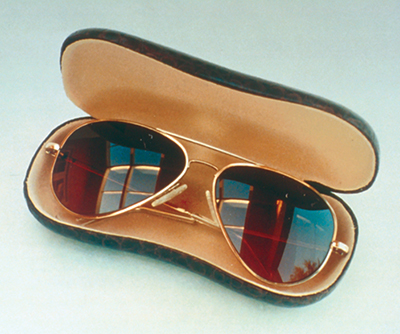Stress-detection Lenses
NASA and other organizations have conducted extensive research on early detection of stress in vegetation through use of various sensory devices that measure radiations emitted or reflected by plants. An extension of that technology is a simple, inexpensive home garden variety plant stress detector, a pair of rose-tinted lenses that enable a viewer to see otherwise invisible signs of plant deterioration. Known as Hawkeye Lenses, the glasses are marketed by Optical Sales Corporation, Portland, Oregon; they incorporate technology developed by a NASA scientist-Dr. Leonard A. Haslim of Ames Research Center-and they were introduced to the commercial market through the technology transfer efforts of the Ames Commercial Technology Office.
The Hawkeye lenses serve as a "passive chlorophyll detector." When drought, pests, disease or other agents cause stress to a plant by reducing chlorophyll, the initial plant damage is not visible to the naked eye except under a microscope. The lenses make it visible by means of dyes, integrated into the lenses, that filter out certain wavelengths of light.
When one looks at a green leaf through a Hawkeye lens, the stressed part of the leaf is visually enhanced and it stands out from the healthy part of the plant by appearing pink or brownish red. "The filtering lenses provide a color discrimination due to the way plants absorb and reflect sunlight," explains Dr. Robert Brock, president of Optical Sales Corporation.
The glasses sell for less than $100 and can be made into prescription glasses. "The glasses work because they enhance the edges of the visual spectrum, allowing the user to see what normally can't be seen," Brock adds. "Plant stress becomes visible earlier, at a critical stage when something can often be done."
Optical Sales Corporation is continuing stress detection research under a Department of Agriculture contract; among the researchers is Dr. Carlos Blazquez of the University of Florida, who has worked with NASA in infrared detection of stress in Florida's citrus groves. The advanced phase of the research is aimed at refining the technology and tailoring it to match the light spectra reflected by various specific plant types.

Hawkeye lenses enable a viewer to see otherwise invisible signs of plant deterioration.













